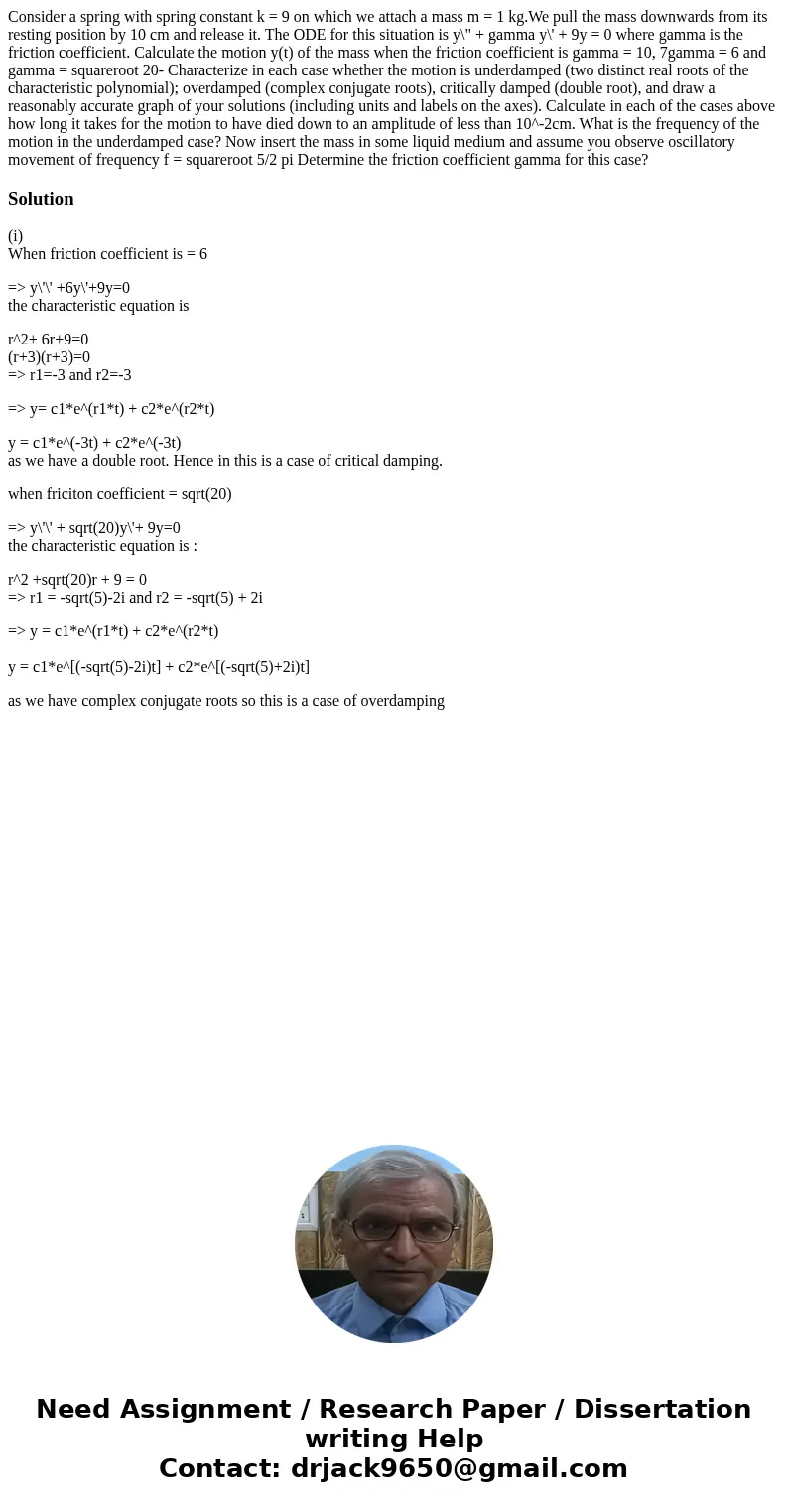Consider a spring with spring constant k 9 on which we atta
Consider a spring with spring constant k = 9 on which we attach a mass m = 1 kg.We pull the mass downwards from its resting position by 10 cm and release it. The ODE for this situation is y\" + gamma y\' + 9y = 0 where gamma is the friction coefficient. Calculate the motion y(t) of the mass when the friction coefficient is gamma = 10, 7gamma = 6 and gamma = squareroot 20- Characterize in each case whether the motion is underdamped (two distinct real roots of the characteristic polynomial); overdamped (complex conjugate roots), critically damped (double root), and draw a reasonably accurate graph of your solutions (including units and labels on the axes). Calculate in each of the cases above how long it takes for the motion to have died down to an amplitude of less than 10^-2cm. What is the frequency of the motion in the underdamped case? Now insert the mass in some liquid medium and assume you observe oscillatory movement of frequency f = squareroot 5/2 pi Determine the friction coefficient gamma for this case? 
Solution
(i)
When friction coefficient is = 6
=> y\'\' +6y\'+9y=0
the characteristic equation is
r^2+ 6r+9=0
(r+3)(r+3)=0
=> r1=-3 and r2=-3
=> y= c1*e^(r1*t) + c2*e^(r2*t)
y = c1*e^(-3t) + c2*e^(-3t)
as we have a double root. Hence in this is a case of critical damping.
when friciton coefficient = sqrt(20)
=> y\'\' + sqrt(20)y\'+ 9y=0
the characteristic equation is :
r^2 +sqrt(20)r + 9 = 0
=> r1 = -sqrt(5)-2i and r2 = -sqrt(5) + 2i
=> y = c1*e^(r1*t) + c2*e^(r2*t)
y = c1*e^[(-sqrt(5)-2i)t] + c2*e^[(-sqrt(5)+2i)t]
as we have complex conjugate roots so this is a case of overdamping

 Homework Sourse
Homework Sourse